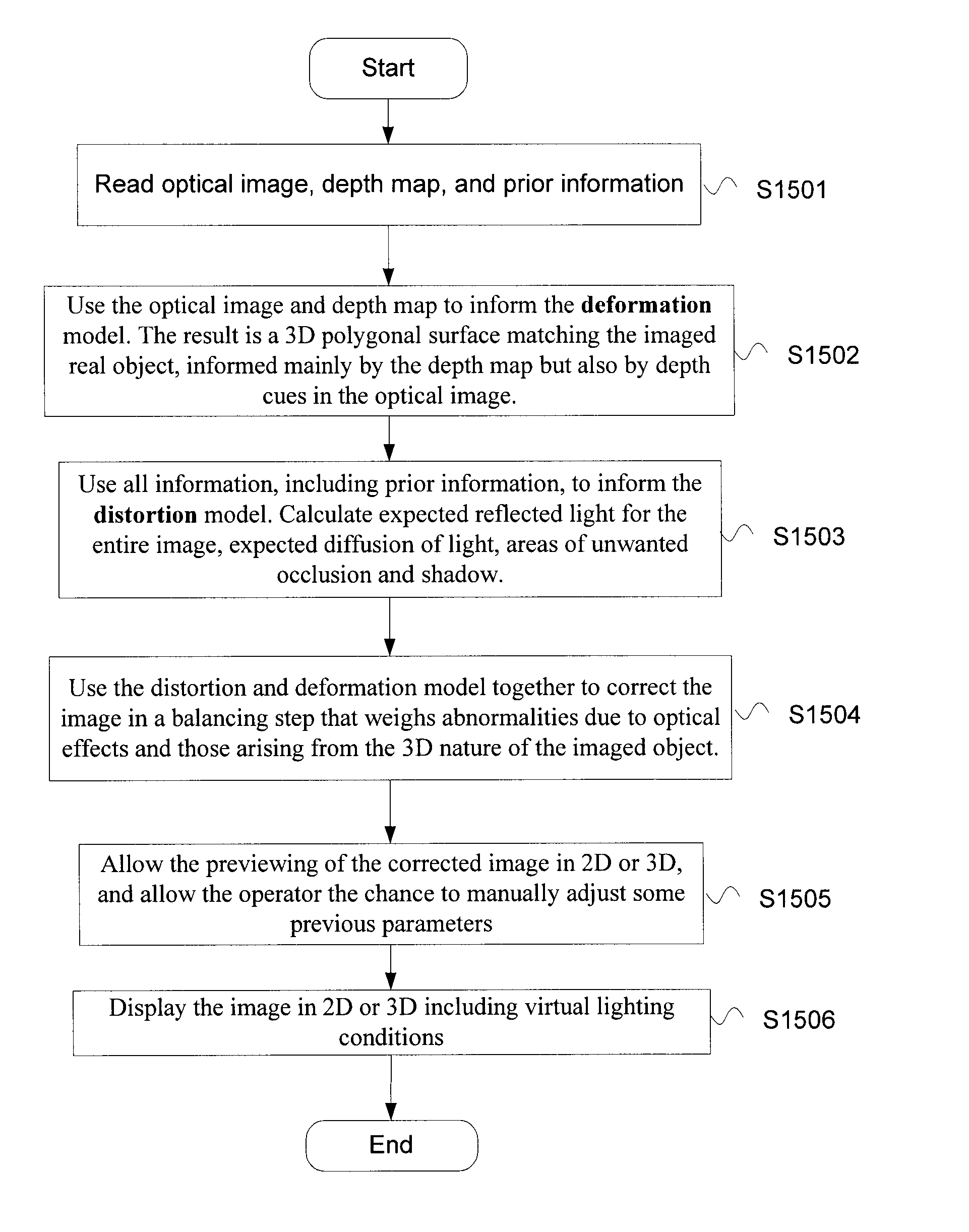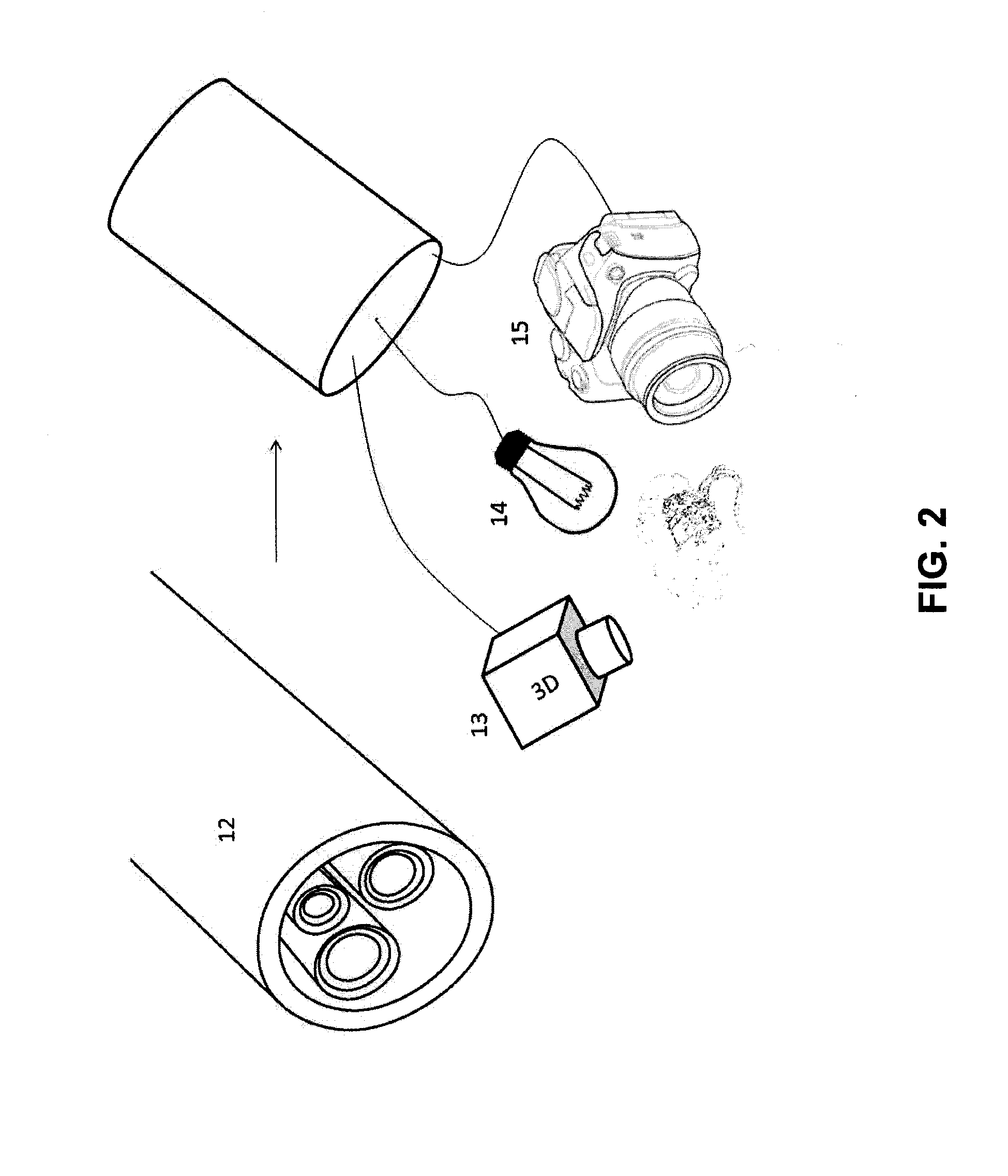3D corrected imaging
a technology of 3d correction and imaging, applied in the field of 3d correction imaging, can solve the problems of limited information to be used in the correction of defects of images, limited image acquisition and post-processing, and additional information
- Summary
- Abstract
- Description
- Claims
- Application Information
AI Technical Summary
Benefits of technology
Problems solved by technology
Method used
Image
Examples
Embodiment Construction
[0032]In the drawings, like reference numerals designate identical or corresponding parts throughout the several views. Further, as used herein, the words “a”, “an” and the like generally carry a meaning of “one or more”, unless stated otherwise. The drawings are generally drawn to scale unless specified otherwise or illustrating schematic structures or flowcharts.
[0033]Furthermore, the terms “approximately,”“proximate,”“minor,” and similar terms generally refer to ranges that include the identified value within a margin of 20%, 10%, 5% or greater than 0%, and any values therebetween.
[0034]Without limitation, the majority of the systems described herein are directed to the acquisition and analysis of medical images. As required, embodiments of medical imaging systems are disclosed herein. However, the disclosed embodiments are merely exemplary, and it should be understood that the disclosure may be embodied in many various and alternative forms. The systems and methods described her...
PUM
 Login to View More
Login to View More Abstract
Description
Claims
Application Information
 Login to View More
Login to View More - R&D
- Intellectual Property
- Life Sciences
- Materials
- Tech Scout
- Unparalleled Data Quality
- Higher Quality Content
- 60% Fewer Hallucinations
Browse by: Latest US Patents, China's latest patents, Technical Efficacy Thesaurus, Application Domain, Technology Topic, Popular Technical Reports.
© 2025 PatSnap. All rights reserved.Legal|Privacy policy|Modern Slavery Act Transparency Statement|Sitemap|About US| Contact US: help@patsnap.com



